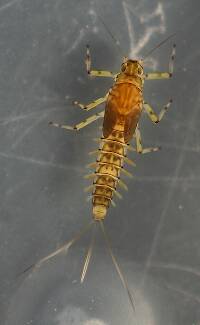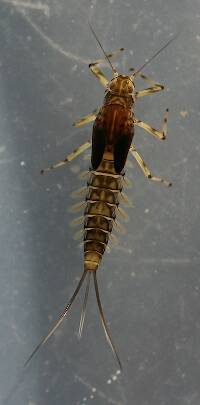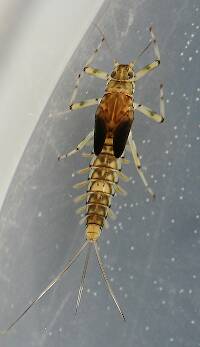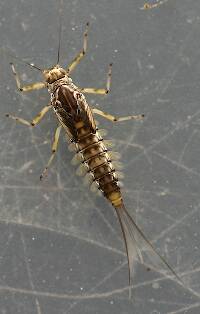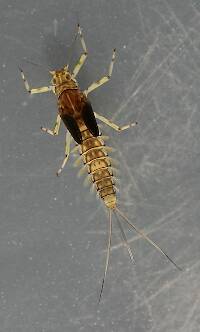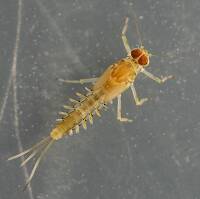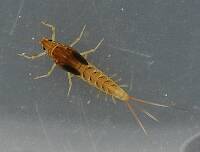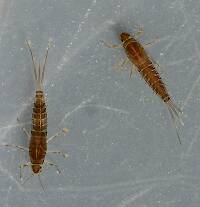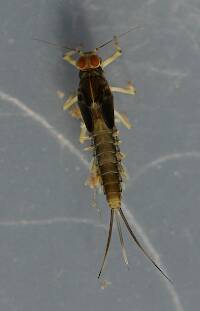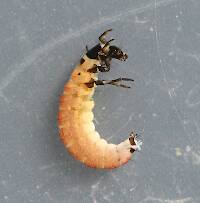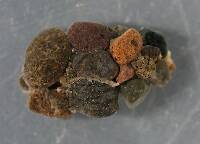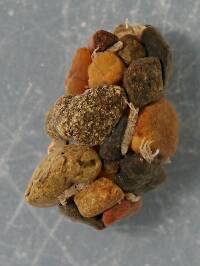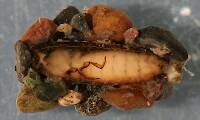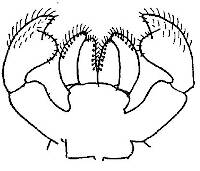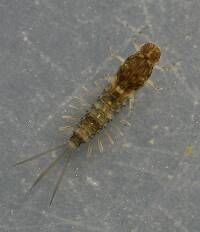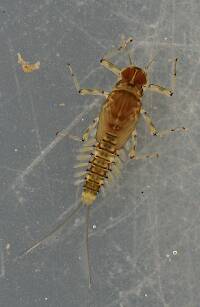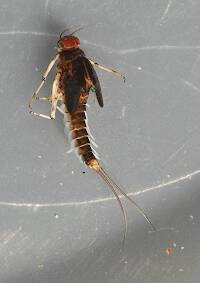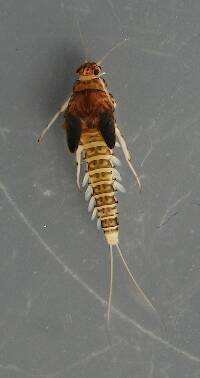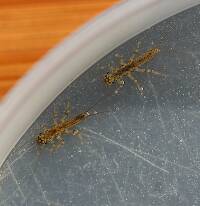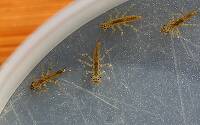
Salmonflies
Pteronarcys californica
The giant Salmonflies of the Western mountains are legendary for their proclivity to elicit consistent dry-fly action and ferocious strikes.
Featured on the forum

This one pretty clearly keys to Kogotus, but it also looks fairly different from specimens I caught in the same creek about a month later in the year. With only one species of the genus known in Washington, I'm not sure about the answer to this ID.

Troutnut is a project started in 2003 by salmonid ecologist Jason "Troutnut" Neuswanger to help anglers and
fly tyers unabashedly embrace the entomological side of the sport. Learn more about Troutnut or
support the project for an enhanced experience here.
Isidro
Posts: 24
Posts: 24
Isidro on Mar 17, 2008March 17th, 2008, 9:34 pm EDT
Im' not hoping an ID, due to the "success" of the last post of European mayflies. I suppose that if t's almost impossible identify mayflies by photo at adult phases, much more difficult will be at nymphal phases. But, maybe someone know, at least, the family of this one. This nymph was caught at Ebro river, in Zaragoza, NE Spain. This river is great and deep, slow and highly contaminated, with lime. The nymph sizes about 15 mm (without cerci). Can be identified, at least, at family level?

Many thanks.

Many thanks.
Taxon on Mar 18, 2008March 18th, 2008, 1:12 am EDT
Isidro-
Your mayfly nymph appears to be a clinger of family Heptageniidae, perhaps of genus Ecdyonurus. Given a decent macro photo, identifying mayflies to family and genus is actually somewhat easier with nymphs than with the winged lifestages, as the gross features on the nymphal lifestage are much more distinctive.
Your mayfly nymph appears to be a clinger of family Heptageniidae, perhaps of genus Ecdyonurus. Given a decent macro photo, identifying mayflies to family and genus is actually somewhat easier with nymphs than with the winged lifestages, as the gross features on the nymphal lifestage are much more distinctive.
Isidro
Posts: 24
Posts: 24
Isidro on Mar 26, 2008March 26th, 2008, 2:34 am EDT
Many thanks Taxon! This is very surprising for me. I hoped that teh adults would be much more easily identified than nymphs. The picture is not good but my camera don't give more. Thanks again for de ID.
Quick Reply
Related Discussions
Topic
Replies
Last Reply
1
May 11, 2007
by Troutnut
by Troutnut
2
Dec 20, 2009
by Oldredbarn
by Oldredbarn



